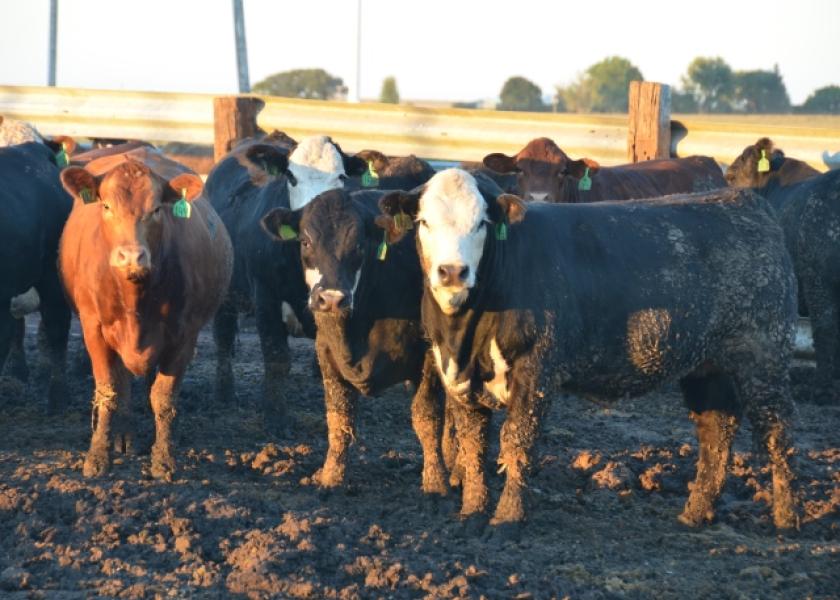Robust Beef Expansion Will Slow

The latest USDA cattle report shows a rapid expansion is underway with cattle and calf numbers up 3 percent and beef cow numbers up 4 percent in the past year. According to Purdue University Extension economist Chris Hurt, record-high cattle prices in the last half of 2014 and first half of 2015 raised excitement among beef cow producers.
“They heard the market’s expansion call,” Hurt said. “During that 12-month period, Nebraska finished steer prices averaged $162 per hundredweight. Since May 2015, cattle prices have fallen sharply and averaged just $126 in the final quarter of 2015.
“Further evidence of the rapid expansion is shown in the 3 percent increase in the number of beef heifers being retained to be added to the cow herd. In addition, the number that is expected to calve in 2016 is up 6 percent,” he said.
Hurt said the beef expansion is widespread across the country as all regions increased their beef cow numbers. However, leading the expansion have been the Central and Southern Plains states with 60 percent of the nation’s total expansion over the past two years. Drought in those regions through 2013 had been an additional reason for massive reductions of beef cow numbers. “Some of the current expansion in those regions represents restocking as the grass returned.”
The Southern Plains is the nation’s largest beef cow region, expanding by 9 percent over the past two years. Other important beef cow regions and their magnitude of beef cow expansion over the past two years are: the Central Plains up 5 percent; the Western Corn Belt up 5 percent; the Eastern Corn Belt up 5 percent; the Southeast up 1 percent; and the Northern Plains up 1 percent.
According to Hurt, feeder cattle supplies will be rising as well. The number of steers and heifers weighing over 500 pounds that are not being retained for breeding purposes is up 4 percent. This is a sizable increase in the feeder cattle supply that can go into feedlots and therefore add to slaughter supplies in the last half of 2016 and 2017.
With the industry two years into beef cow expansion, the question is, how long will this expansion phase last?”
“Historically, beef cattle expansions lasted five to six years,” Hurt said. “However, history is not likely to be a very good guide on this cycle. The reasons are that the current expansion has already been quick and of large magnitude. The profit outlook for brood cow operations is already providing much less incentive than a year ago. And, with beef production in the rest of the world also expanding, other countries are able to ship increasing supplies of beef to the U.S. and to our foreign buyers. Finally, U.S. pork and poultry supplies are also expanding rapidly providing heightened competition. My best guess is that U.S. cow numbers will continue to rise for only one or two more years, making this a relatively short expansion phase of three or four years,” Hurt said.
Available beef supplies in 2015 were higher than had been anticipated at the start of the year. USDA inventory data one year ago indicated that the number of cattle available for slaughter would be down about 5 percent.
“In reality, the amount of beef available in the U.S. in 2015 was actually up 1 percent,” Hurt said. “How did we go from 5 percent lower slaughter numbers to 1 percent more beef? The answer is in higher weights and in higher beef imports. Each added about 3 percentage points and thus the amount of beef available was up 1 percent.
“For 2016, beef production is expected to rise by 4 percent,” Hurt continued. “However, USDA analysts believe that trade, particularly beef imports, will be down this year. That is possible because beef prices will be lower and will provide less incentive for large imports. A counter argument is that the exchange rate of the U.S. dollar is currently stronger than for most of 2015. The dollar is particularly strong versus Brazil who is the second largest world beef exporter. These relationships at least suggest some uncertainty for U.S. beef trade in 2016.”
Hurt said the live cattle futures market is not optimistic for finished cattle prices. An estimate of 2016 finished cattle prices derived from current futures suggest yearly averages of around $125. This compares with actual prices of $126 for calendar 2013, $155 in 2014, and $148 in 2015.
The annual 2016 pattern of prices from these estimates for the four quarters of 2016 are $132, $128, $117, and $120 in the final quarter.
“Live cattle futures have had extreme volatility in the past two years, so their accuracy at predicting forward prices should be suspect,” Hurt said. “However, live cattle futures are the hedging mechanism for cattle feeders and must therefore be taken as the current opportunity to forward contract finished cattle prices.”
Steer calves weighing 500 to 550 pounds at Oklahoma City reached record-high prices in May 2015 at $290 per hundredweight. By December, those prices had fallen to $194, a level that provides only modest profits above total costs of production, and therefore small incentives for continued brood cow expansion.
“The current futures market estimate of 2016 finished cattle prices might provide prices for those Oklahoma City calves of $185 to $205,” Hurt said. “This would probably signal small potential profits above all costs. Under this price situation the industry would continue further beef cow expansion plans this year, with the expansion phase more likely to begin leveling off in 2017.”
Source: University of Illinois







